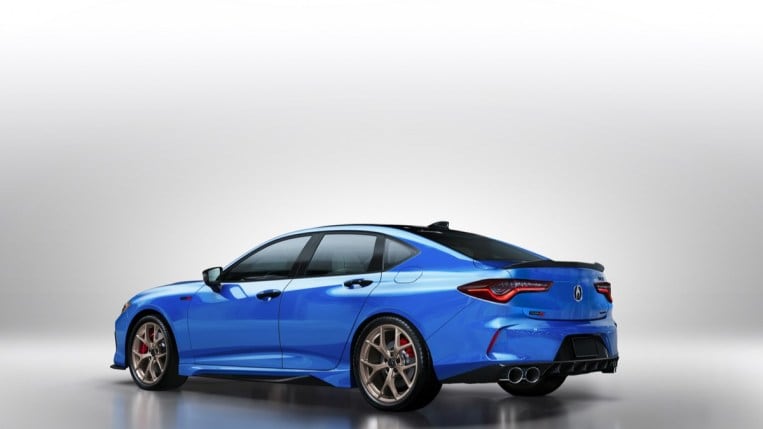![]()
Share
When the Continental Mark IV was introduced for the 1972 model year, it wore close visual ties to the smash hit that was its predecessor, the Mark III. After federal safety legislation altered the front of the Mark IV’s appearance in 1973 and its rear in 1974, the visual connection between the two cars thinned considerably. The Mark IV (like other large PLCs of the time) struggled with regard to sales but received a boost in 1976 with the arrival of the Designer Series editions. The expensive high-profit trims saw the 1976 Mark IV go out on a high-ish sales note of 56,110 examples, around 8,000 more than its debut year in 1972. In 1977 Lincoln aimed once more for PLC success with the new, even larger Continental Mark V.
It’s a good idea to establish some context at this point, as things had changed since the introduction of the Mark IV. In 1977 the Lincoln range consisted of the new midsize Versailles, the two- and four-door Continentals and Continental Town Car, and the new Mark V. In 1977 the Continental range was still in its fifth generation guise, the one from 1970. After its fifth model year, Lincoln updated the Continental substantially and pulled it in a more upscale visual direction.
Such a move was well advised, as the Continental was criticized upon its debut for its close resemblance to a lesser sibling, the Mercury Marquis. For 1975 Continental was updated with a new roofline, tail lamps, and a new opera window on Town Car. At the same time, Mercury took the Marquis upmarket with the introduction of the Grand Marquis version.
Lincoln took further steps away from the Marquis in 1977 with the introduction of a new grille, which replaced the wide Marquis-style unit with one nearly identical to the new Mark V. Continental would continue on in this format through 1979, which coincided with the final year of the Mark V and the arrival of corporate downsizing in 1980.
But there was no time to worry about downsizing in 1977, as Lincoln introduced a Mark that was larger and more luxurious than ever before. Elsewhere in the coupe market of the late Seventies, the demand for intermediate PLCs had increased considerably, and newer arrivals from the Detroit Three all competed for the same customer.
By that time, General Motors offered the Oldsmobile Cutlass Supreme, Pontiac Grand Prix, Buick Regal, and Chevrolet Monte Carlo to the gold chain-wearing PLC customer. Chrysler pitched the baroque Cordoba with rich Corinthian leather, and Dodge offered the sportier, less fussy Charger version (which swapped to the Magnum in 1978). All these competitors were a problem for Ford.
The Blue Oval had offered an unsuccessful PLC based on the Torino platform for three years, called Elite. Introduced in 1974 and originally named Gran Torino Elite, the model shared much with the Mercury Cougar XR-7 but had redesigned front and rear clips to make it look more like a Thunderbird. It was a low-cost effort at an intermediate car, meant for the buyer who couldn’t spring for the full-size Thunderbird.
The Elite didn’t appeal to buyers like Ford planned (because it was ugly and sort of bad), so they killed off the model after 1976, sort of. Ford wanted to save cash and create an intermediate PLC offering, while simultaneously allowing the Mark V more space and independence at the top of the market. Thus, in 1977 the Thunderbird was downsized into an intermediate car and moved onto the Torino platform with the Cougar.
Over eight inches shorter than its predecessor, the new seventh-generation Thunderbird was offered as a two-door coupe and lost much of its luxury status for more mass-market appeal. Ford’s full-size coupe in Thunderbird’s stead was the LTD Landau, already in the last couple of years of its second-gen guise (1969-1978).
The sacrifice of Thunderbird at the altar of common PLC gave the Mark V the breathing room Lincoln desired, but caused two new problems for the model. Without its volume platform sibling and considering the Mark IV’s middling sales, Lincoln management could not justify spending the development dollars for a new Mark-specific platform.
Aside from budgetary concerns, the way the Mark IV was rejuvenated late in life by the Designer Series trims made a new styling direction seem too risky. The traditional luxury PLC customer was one who returned to buy a new car and wanted much the same thing they’d bought before: An enormous car full of velour and fake wood, with as many power features as possible.
So when it arrived in 1977, the Mark V rode on a platform all its own. That sort of platform independence had only happened once before, in the Mark II of 1956-1957. Its underpinnings weren’t new, since the Mark V was forced to continue on the Mark IV / Thunderbird chassis. But the platform recycling didn’t mean the Mark V was just a second take of the Mark IV. Just the opposite: Because Lincoln engineers started with a complete platform, it meant they had plenty of time to spend improving it.
In our next installment, we’ll go over the efficiency edits engineers made to modernize and assure the Mark V was more prepared for a post-oil crisis marketplace. We’ll also cover mechanical details, and discuss its exterior looks. It was an important moment for the brand, as the Mark V coupe of 1977 debuted with the styling direction Lincoln would carry through the end of the Eighties.
[Images: Ford]
Become a TTAC insider. Get the latest news, features, TTAC takes, and everything else that gets to The Truth About Cars first by subscribing to our newsletter.




More Stories
What Your Vehicle’s History is Telling You (& What It Isn’t)
Tips For Extending The Life Of Your Secondhand Car
‘Bullitt’ Was and Still Is Bad